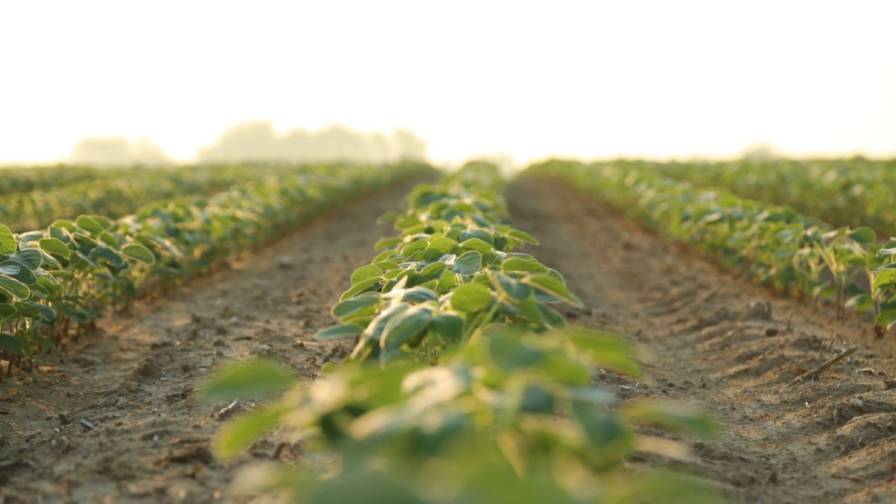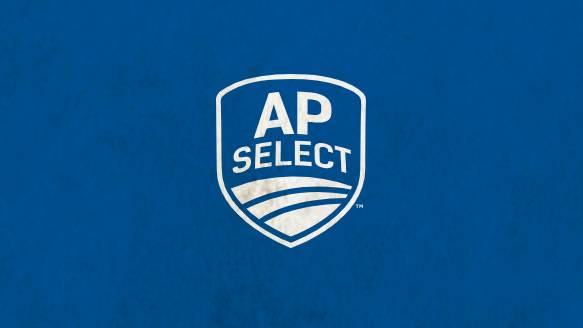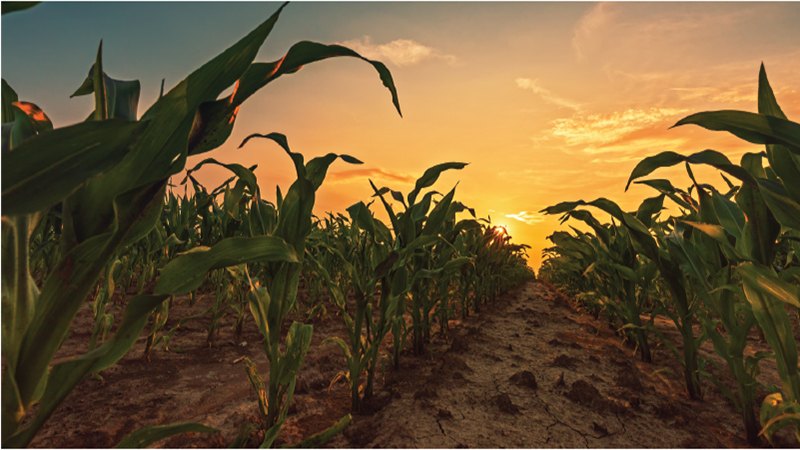Meeting Changing Liquid Storage Needs
Tank and containment manufacturers have definitely taken note of the logistical, economic and regulatory challenges dealers and growers have been facing lately — and have been stepping up with wide range of systems to meet varied storage needs and budgets.
“We’ve seen fertilizer companies expanding storage capacity due in part to transportation issues such as rail car availability,” says Tony Julson with J.C. Ramsdell Enviro Services Inc., which handles secondary containment and installation for both fertilizer and petroleum products. Indeed, customers have faced problems with transportation of products during critical times. With that has come an increased demand for liquid fertilizer secondary containment over the last year, Julson says.
In addition to fertilizer transportation issues, steel prices should be a motivating factor for expansion of liquid tank storage capacity, says Chris Brooks, president of Heartland Tank Services, Inc. Steel prices have been holding moderately between $54.50 and $57 per hundred weight, despite expectations of an imminent sharp price increase.
In fact, to keep pace with heightened demand for API 650 welded steel tanks, sister company Heartland Tank LLC has 10 tank crews working across the country constructing the needed capacity.
Cady Inc. has experienced a similar uptick. The increasing capacity of UAN production is driving demand for the company’s NutriStore structures (developed by CST Industries), says Randy Cady, president. Plus, he says there’s been a subtle move to UAN for multiple fertilizer applications, boosting demand.
CST has been known in agriculture for its glass-fused-to-steel approach in livestock feed silos and liquid manure storage systems. The company developed a tank with the glass/steel combination on the walls and floor that can withstand the aggressive nature of fertilizers.
In addition, Cady says customers have appreciated how quickly NutriStore units can be constructed on site and how the builds need “no maintenance.”
Crop production changes such as the move to more use of UAN are important to track — and vital to consider when constructing a facility.
“As application rates and products change, the ability to adapt is crucial,” says Jonathan Scarfpin, project manager with A&B Welding, which offers turnkey solutions for liquid fertilizer. He says his firm works very hard to make sure that its projects are flexible to meet the future needs of the customer.
Besides increased fertilizer use in general, J.C. Ramsdell has encountered another boon for business. Located in the Dakotas, Julson says the company is in an area “which we feel is a new frontier for crop production,” and he’s seen strong growth in fertilizer facilities — with accompanying storage and containment builds — throughout the region.
To service its western customers, Precision Tank & Equipment just opened a fourth plant, located in Humboldt, IA, to produce fiberglass and stainless steel tanks at competitive prices. “The products provide longevity for growers and dealers looking for long-term solutions to their storage needs,” says Gary Ruff, regional sales manager.
Dennis Neal, president of Enviropac, says fiberglass has become “the tank of choice,” compared to some 20 years ago when he started in the business. Today, competition has grown greatly in the tank field, though some newer firms, in his opinion, are not as knowledgeable as customers need. Buyers have run into performance problems. In particular, Neal says manufacturers really need to pay attention to the products or chemistry (such as acids) going into tanks.
Neal sees the latest trend in purchasing and consolidation of ag dealerships impacting tank sales. In a recent case, one of his independent Illinois dealer neighbors was purchased by a huge conglomerate.
“This is causing some changes in how the industry operates and purchases products,” he’s found. “Decisions are less local. But some of the companies still are, in my opinion, smart enough to leave decision-making more to the local level, where the operator knows what he really needs.”
Ultimately, Julson believes the trend toward consolidation of fertilizer retailers, with the increasing centralized storage and distribution systems, is creating a demand for secondary containment.
Looking At Liners
Ken Hunter, owner of Hunter Agri-Services, says that while business in 2014 has been solid, he thinks sales of his company’s Plia products would be a little better if the grain market was a little stronger. “It’s up and down like a yo-yo,” he notes.
He has found dealers are making fewer improvements than they used to, with fewer new plants going in, compared to previous years. “That’s to be understood, with the big growth we’ve had in the last decade – there’s bound to be a little slow-down,” he says.
Now in business for nearly four decades, Hunter Agri-Services offers the Plia-Tank as a primary containment system, while the Plia-Dike provides secondary containment. Hunter says his Aerial Plia-Pad continues to move well, especially as growers continue to take advantage of the reported crop health benefits of some late-season fungicide products.
Flexible internal PVC tank liners have experienced an increase in demand due to expansion of their use. For instance, approximately 80% of all new tanks built by Heartland Tank, LLC use a Heartland Tank Services, Inc. PVC tank liner for containment. Brooks notes that — starting in the 1990s — his company pioneered the acceptance of PVC tank liners by Midwest states as an alternative for containment requirements. Additional states are currently considering revising their regulations to include PVC tank liners as a containment choice that is less expensive than using double-wall tanks or lined dikes.
Like Heartland, newcomer Agraliners, LLC offers fabrication and installation of radio-frequency-sealed PVC liners for liquid storage tank systems. The company serves fertilizer distributors, especially large coops, primarily installing liners for tanks in the million to million-and-a-half gallon range.
Ken Kane says the “dialectric welding” process uses radio frequency waves to bond two pieces of PVC membrane at a molecular level — creating one solid piece of liner material, which helps prevent leaks.
He adds that his company is “swamped” with orders, due in large part to increasing demands on fertilizer plant construction from EPA and state departments of environmental quality. “They have a lot of specific requirements to protect the groundwater,” he explains.
Impact Of Regulations
J.C. Ramsdell’s Julson says that regulatory challenges, which vary state-to-state, are always at the forefront of conversations with customers. “Most of the rules have been in place for a long time, but can still be confusing for our clients,” he says. “We take pride in helping them understand the regulations and any upcoming changes in their area.”
Getting a facility built these days can be slowed by the regulatory process. Cady specifically mentions the time it takes to get permits. “That can be a challenge with whatever type of UAN tank is being installed,” she says.
A striking scenario is coming up more often in the permitting process for one facility manufacturer. “One of the issues we have faced is educating those not involved directly in agriculture,” says A&B’s Scarfpin. “As we help with facility permitting, those in control of the permit process seem at times to fear agriculture projects. I have been in meetings where the person in charge of issuing permits made the comment, ‘Well, I hope they all don’t explode.’
“Usually after we have the opportunity to meet with these regulatory authorities, they come away with realizing the high level of safety and redundancy built into A&B’s projects.”
The Illinois Fertilizer & Chemical Association (IFCA) has been proactive in educating those who make the laws and regulations, Neal points out. For the past year, Illinois EPA has been leading an effort to devise a comprehensive strategy to reduce nutrient losses to Illinois rivers, lakes and streams, as well as to reduce Illinois’ contributions to the hypoxia zone in the Gulf of Mexico. Decisions concerning these issues will have an effect on the use of fertilizer products on how they will be stored, handled and applied.
Looking Ahead
Heading into 2015, one of the biggest questions for all segments of ag — including tank and containment suppliers — is the impact of lower commodity prices.
“While we are anticipating less demand due to lower crop prices, we have not seen it yet,” says PT&E’s Ruff. “Customers in general are still looking at the big picture and making decisions based on the next five years, not what is happening this fall.”
Enviropac’s Neal, situated in the heart of the Corn Belt, agrees. “I see business as usual with customers. They’re going to go out there and plant fencerow to fencerow. They may shift a little bit between corn and beans, but everything is still going to go full bore.”
Another question mark? Weather. Brooks says weather affected Heartland’s products in 2014, causing a slow start to the year. Facility owners have been ordering very late in the season and requiring storage to be ready for fall fill. He anticipates a slight slow-down in 2015 as weather is predicted to be harsh again. “I still tell our customers that they should have seven to ten months of advanced planning for new storage and containment if they want to take advantage of the fall fill requirements,” he emphasizes.
Julson believes farmers should still be financially strong from previous years, but J.C. Ramsdell is closely monitoring any reductions in agronomy inputs and the availability of product when needed. He says agronomy retailers have recently had very strong years, and his team feels that those that have budgeted improvements or expansion for 2015 will follow through.





